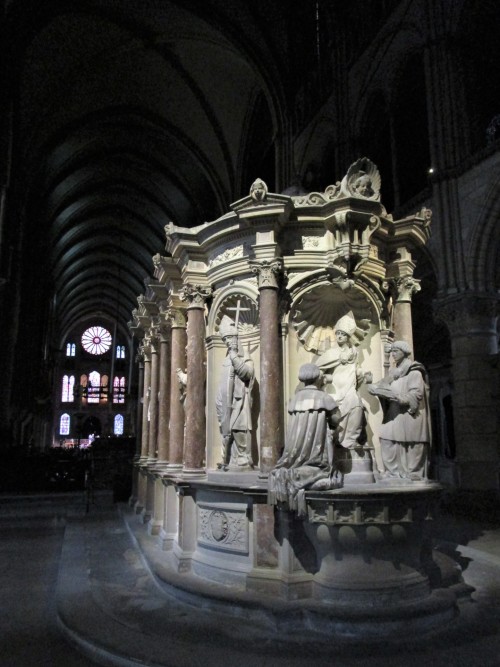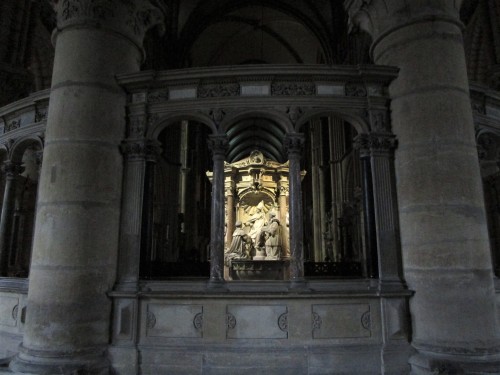#renaissance sculpture
TheTomb of Saint Remi in the Basilica of Saint-Remi, Reims.
The original Renaissance tomb was made in the 16th century, but it was destroyed during the French Revolution. This is a replica made in 1847 with some fragments of the original. The rounded end of the tomb depicts St. Remi baptizing Clovis, King of the Franks.
Photos by Charles Reeza
Post link







FLORENTINE CIVIC SCULPTURE III: DAVID AS REPUBLICAN GUARD
The marble David carved by Michelangelo for the Operai of the Florentine duomo between 1501-1504 is surely the most famous sculpture ever produced and, with the possible exception of Leonardo and the Mona Lisa, the work of art that most completely symbolizes for the public its creator’s genius.
The statue, however, has an oddly tenuous relationship to the artist. The operaiordered the elongated block from the Cararra quarries in the early 1460s to be used for a standing figure of David, which was destined for the upper reaches of the cathedral’s exterior. Two sculptors had worked on the David block, before it was abandoned outdoors for 25 years. The location had been decided before Michelangelo was born and changed without warning after he had finished it. To put it another way, the artist did not formulate the subject matter, did not choose the pose of the figure, or control the circumstances of the display of the work most closely associated with him. And yet it seems impossible not to see the David as the product of his particular artistry.
1464: Agostino di Duccio commissioned to carve free-standing David to be placed on an exterior buttress of Duomo. He begins work on block of Carrara marble, roughing out placement of feet and legs, arrangements that effectively determined the figure’s pose and stance.
1466: Death of Donatello; Agostino ceases work on David.
1476: Antonio Rossellino briefly works on David.
1476-1501: Unfinished block lies exposed to elements
1501: Operai begin search for sculptor to finish David, despite poor condition of block. Twenty-six year old Michelangelo asks for, and is awarded, commission.
1504: As statue nears completion in January, Operai realize impossibility of lifting and installing it on intended location on cathedral. Committee of 30 prominent architects and artists, including Leonardo da Vinci, Botticelli, Piero di Cosimo, Attavante de’ Attavanti and Giuliano da Sangallo, convened to consider a new location for David. Most favored places are Loggia dei Lanzi, entrance to the Palazzo della Signoria and inner courtyard of the Palazzo della Signoria.
1504: In June, Donatello’s bronze Judith moved from the entrance to the Palazzo della Signoria to the inner courtyard. Over a period of four days, 40 men move the 5.2 m statue of David from Michelangelo’s studio, which was located behind the duomo, to the entrance of the Palazzo della Signoria, where it is installed on its pedestal. The civic context transforms the biblical figure into a political symbol of the Florentine regime. With his pose of armed readiness and wary gaze, David symbolized the vigilance and determination of the recently-refounded Republic, while guarding its principal site of government.
Despite its overt use as a political symbol by the republican government, the David remained in situ after the return of the Medici to Florence in 1497 and after the creation of the ducato in 1530. It was moved indoors to the Galleria dell’ Accademia in the 19th century due to weathering concerns.






